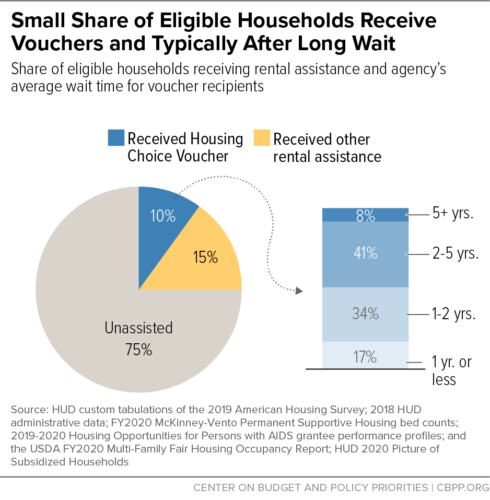While walking home from work, you pass a man holding up a cardboard flat. It reads “Have you ever felt invisible?”
You pause, only for a moment, and catch a glimpse of his hazel eyes. Does a desire to empathize compel you to give? Or does it merely flicker over a sense of hostility and frustration that this man is dirtying your street?
Each day, I pass my same homeless neighbors with a desire to help, but often coupled with the wish that those people were not there– that their problems would not highlight my obligation to help. I’ve learned that these self-encounters are incredibly important, though, in the fight to end this issue. We must be willing to change our perspective if communities are to try and tackle homelessness.
Rather than asking “Why is this problem in my neighborhood,” we must seek to help serve its needs.
What is the Section 8 Voucher Program?
So how can I, and the rest of America, seek to resist NIMBYism, no matter the personal costs? Integrated affordable housing is key.
Section 8 of the United States Housing Act establishes a voucher program to enable low-income individuals to rent units from the private market. Today, more than 5 million people use Section 8 to secure housing for themselves and their families. Yet, the program still fails to reach millions of eligible Americans.
Not enough legislators seek to support its funding. And as a result, only 10% of qualified Americans receive Housing Choice Vouchers, often after a two- to five-year wait, according to the Center on Budget and Policy Priorities. Wait times such as these are detrimental. They further family instability and deny individuals the ability to secure a stable income.

Therefore, without access to mixed housing, low-income neighborhoods continue to be isolated from the possibility of economic recovery and growth. This affects not just public housing, but all forms of government-subsidized programs, such as public education.
In New York City, for example, both school attendance and high school graduation rates were lowest in the city’s most under-resourced districts. These districts were also home to some of the largest housing projects in the city, cites a study done at the Steinhardt School of NYU.
Today’s public housing clearly fails to address the systemic segregation between the wealthy and underserved. If, instead, we sought to truly invest in subsidized rentals for homeless people – expanding the scope of the housing choice voucher program – we may begin to see greater inclusion and opportunity for those currently living on the streets or in under-resourced temporary housing.
Successful Housing
According to HUD’s Office of Policy Development and Research, cities throughout the US that have implemented mixed housing have met considerable success in integrating varying socio-economic statuses and ensuring well-maintained facilities for residents.
New Quality Hill, for example, is a 466-unit mixed housing complex in downtown Kansas City. It has brought market-rate renters to the low-income neighborhood, supporting the area’s economic growth.
Ultimately, the choice is left to housed Americans: are we willing to welcome homeless people into our co-ops and condos? It’s our responsibility to advocate for integrated, affordable housing for all Americans. We can start by urging our local politicians to develop more bills allocating funding to this critical piece of legislation.
Let’s join a collective fight to value our homeless neighbors and ensure adequate, sustainable housing opportunities for all people.













